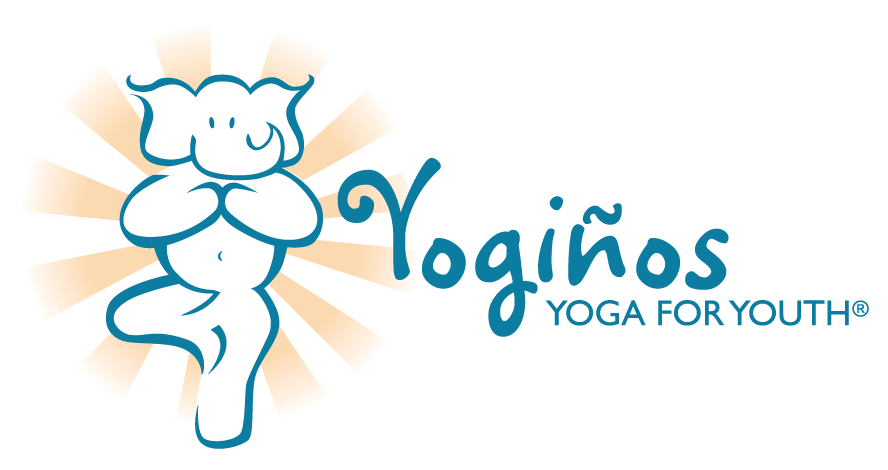by Beth Reese, PhD, E-RYT, RCYT, YACEP
Earlier this week I had the honor of leading a MOSST (Mindful and OHMazing® Strategies for Students and Teachers) training at Goldberg Montessori School in Houston. Similar to many schools and faculties I work with, a few teachers at Goldberg were already using some yoga poses and breathing techniques in their classrooms. Distinct about a MOSST school is the use of a common language that supports social emotional learning (SEL) among the teachers, students and families. This system allows for learning and practicing self-regulation tools—like breathing—in different spaces and contexts. It also empowers peer-to-peer reinforcement. Trust me: there’s nothing quite like hearing and seeing a preschooler ask a friend if she “needs flower power breath,” followed by her reaching into her pocket to pull out and share an imaginary flower!
Focusing on the breath is beneficial for several reasons. First, using a breathing tool when you feel the heat of anger creates a pausing point to (re)consider an intentional response instead of a habitual reaction. For example, when my oldest daughter and I were moving her into college, a few times it felt very stressful. When I asked where she wanted something and in that moment and it felt overwhelming to her, instead of giving way to the frustration and snapping at me, she asked, “can we stop and do a few flower power breaths?”
Next, there also is quite a bit of research about how practicing calming breaths help decrease depression, fatigue, heart-rate, and blood pressure, while increasing core strength and stamina. From an educational perspective, I assert that it’s likely a student who has increased core strength and stamina—and an ability to manage emotional responses—is more likely to succeed with greater ease and workability.
Here are 3 breathing tools that I have shared with schools PreK-12 for over 10 years. They are tried and true for use in classrooms, homes, studios and just about any environment. The teachers at Goldberg Montessori School were most enthusiastic about integrating Flower Power Breath and Belly Breathing into their classrooms. At our next follow up coaching session—and one that is a relatively easy partner pose especially for tweens and teens—I will share Back-to-Back or Buddy Breathing.
See the video below for a demonstration of Belly Breathing.
Flower Power Breath
• Sit with legs crossed with ankles stacked or ankles touching.
• Sit tall, pressing tailbone down into the ground and reaching crown of head up to the sky
• Reach one arm up and then forward and pretend to pick a flower
• Bring an imaginary flower to nose and breathe in deeply through your nose until you cannot bring any more air into your body.
• Slowly breathe out with an ahhhhhhhh through your mouth allowing hand with blossoming fingers to slowly lower to earth.
• Repeat with other hand.
• Ask students to pick many imaginary flowers, and put them in their pockets. Share that anytime they need a breath—or they want to share it—they have lots of “flowers” in their pockets. They love this!
• Ask participants to notice and share any changes or shifts in body sensations, thoughts, feelings, mood as a result of pausing to breathe.
• Share how to use this breath when you notice the heat of anger in your body as a way to help the body slow down and return to a state of feeling calm and grounded.
Belly Breathing
(see video below)
• Sit tall, if in a chair place both feet flat on the ground. Note that this is always grounding.
• Place hands on belly
• Breathe in filling belly, sides and back with air like an expanding birthday balloon
• Slowly exhale
• Repeat several times
• Ask participants to notice and share any changes or shifts in body sensations, thoughts, feelings, mood as a result of pausing to breathe
• Share how to use this breath when you notice the heat of anger in your body as a way to help the body slow down and return to a state of feeling calm and grounded
Back-to-Back or Buddy Breathing
• I recommend first teaching Belly Breathing
• Invite students to find a partner (or use your methods for having youth partner up)
• Sit back to back, gently leaning in to one another and not overpowering
• Cue Belly Breathing reminding them to expand three-dimensionally
• Allow partners to breathe together for at least 30 seconds
• Ask participants to notice and share what they observed about breathing with a partner
• Ask participants to notice and share any changes or shifts in body sensations, thoughts, feelings, mood as a result of pausing to breathe
• Share how to use this breath when you notice the heat of anger in your body as a way to help the body slow down and return to a state of feeling calm and grounded
• Share how to use this breath when you notice the heat of anger in your body as a way to help the body slow down and return to a state of feeling calm and grounded
Try these at home, in the car, in your classroom, studio and beyond! Share your experiences with us on IG, FB, T and LinkedIn!
For more information about bringing MOSST and other resources to your classroom, home and studio, see yoginos.com and info@yoginos.com MOSST features Professional Development for faculties, sessions for parents, follow up coaching for teachers and administrators, along with award-winning bilingual resources. We have led MOSST and similar trainings for private and public schools, from preK-12.
Beth Reese, PhD, E-RYT, RCYT, YACEP, is a mother, independent museum and wellness educator, and freelance writer. As the founder of Yogiños: Yoga for Youth®, she has authored award-winning, bilingual resources for kids, teachers, parents, and families. She leads trainings and professional development workshops for individuals, teachers, schools, and museums.


